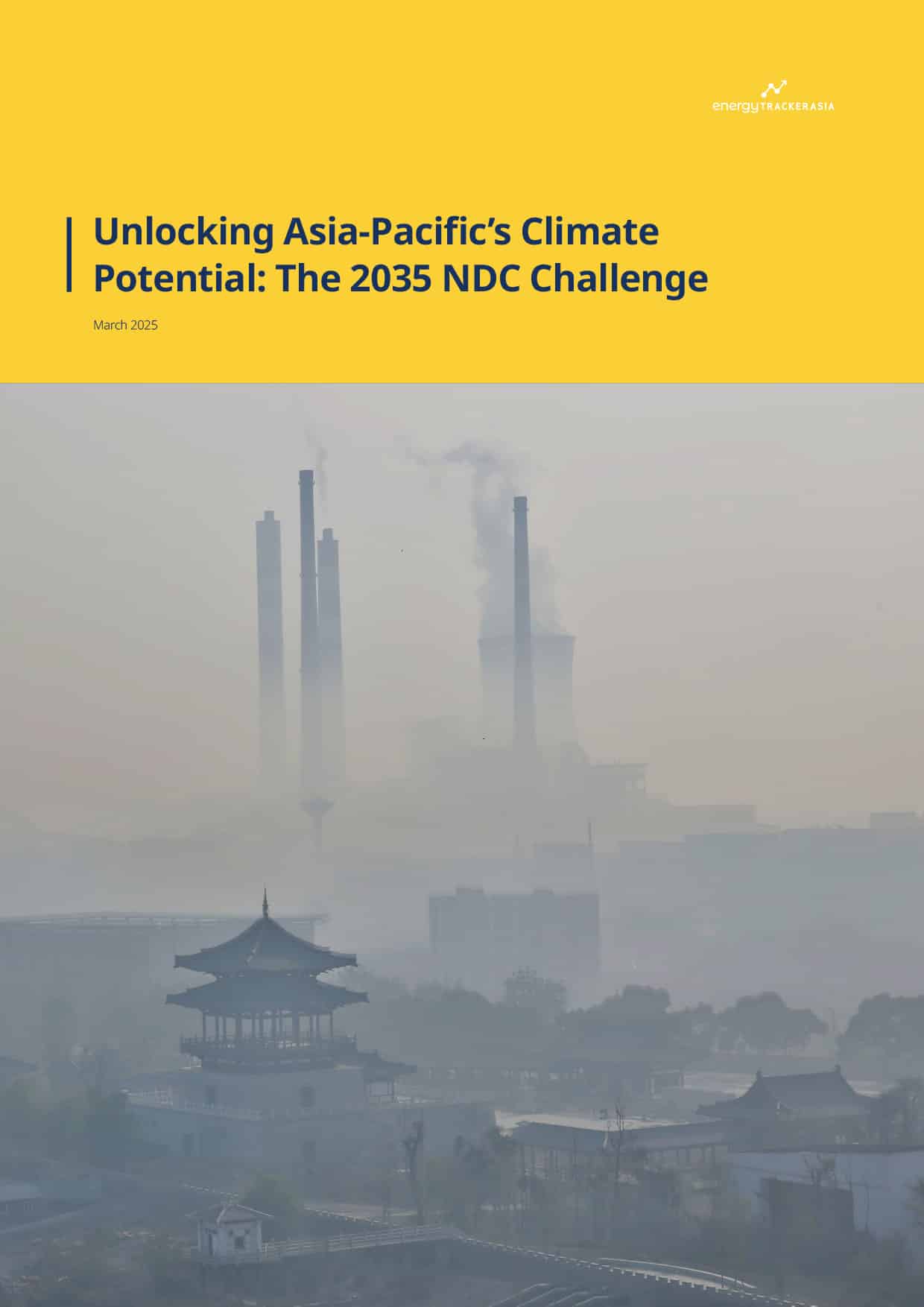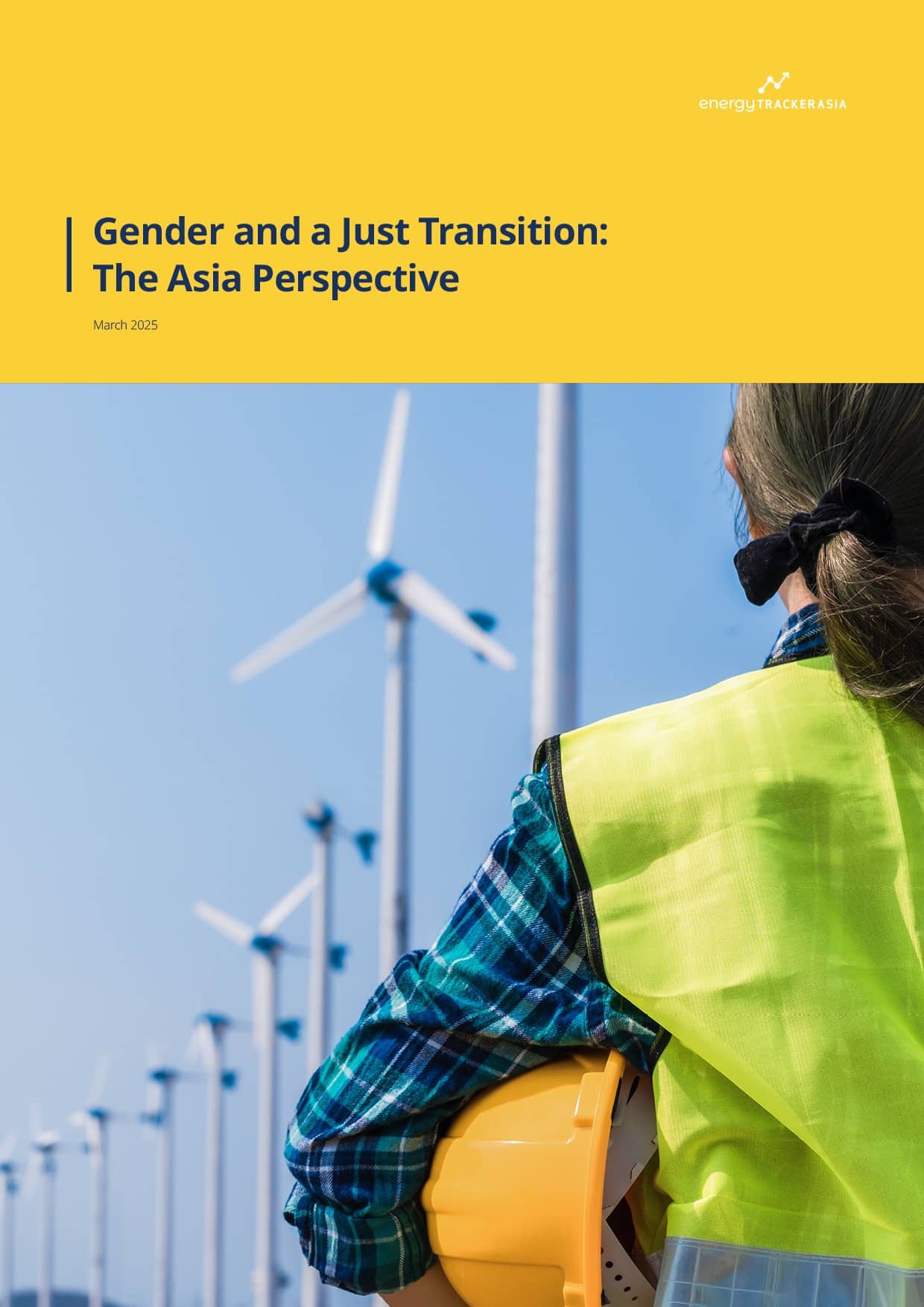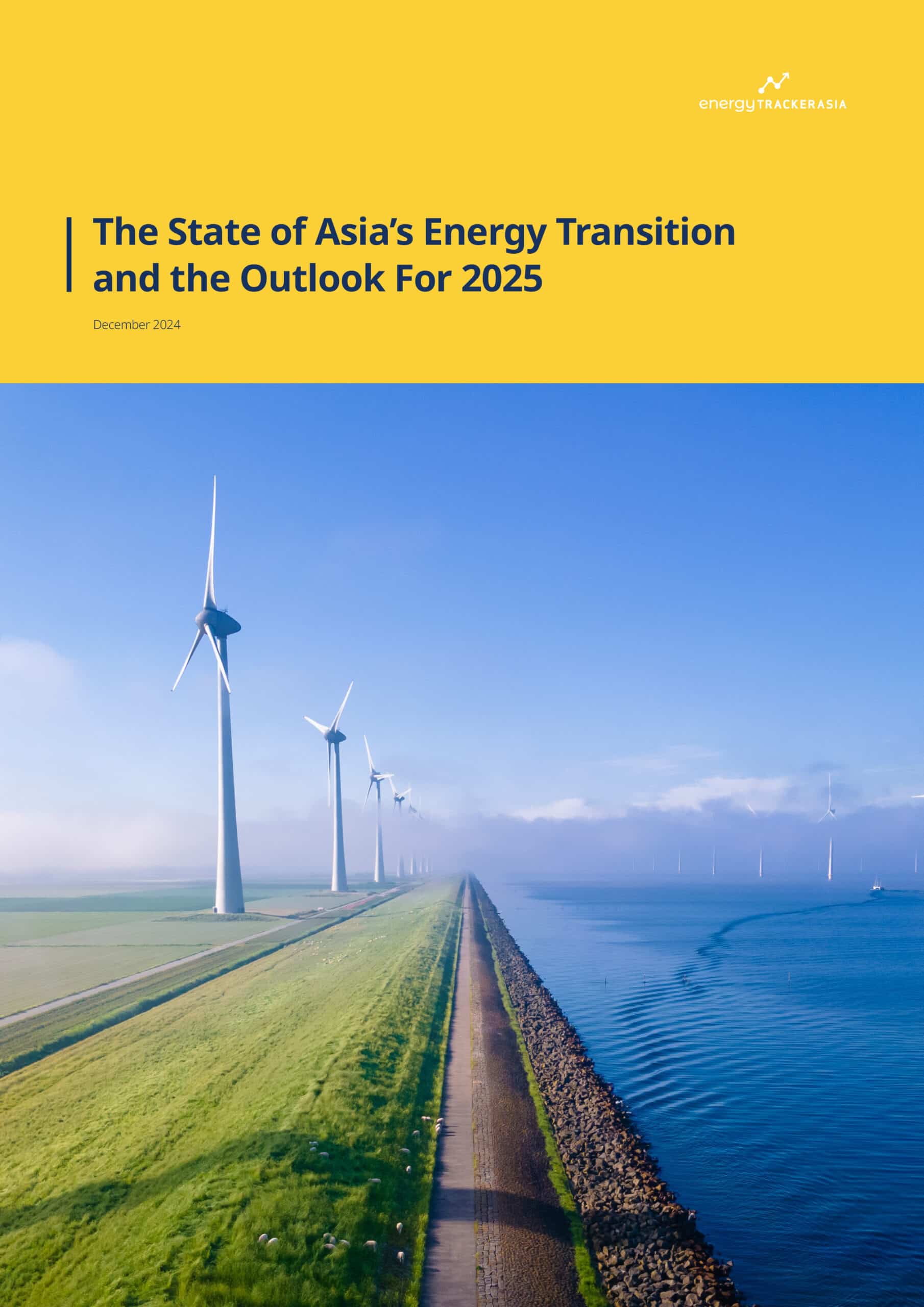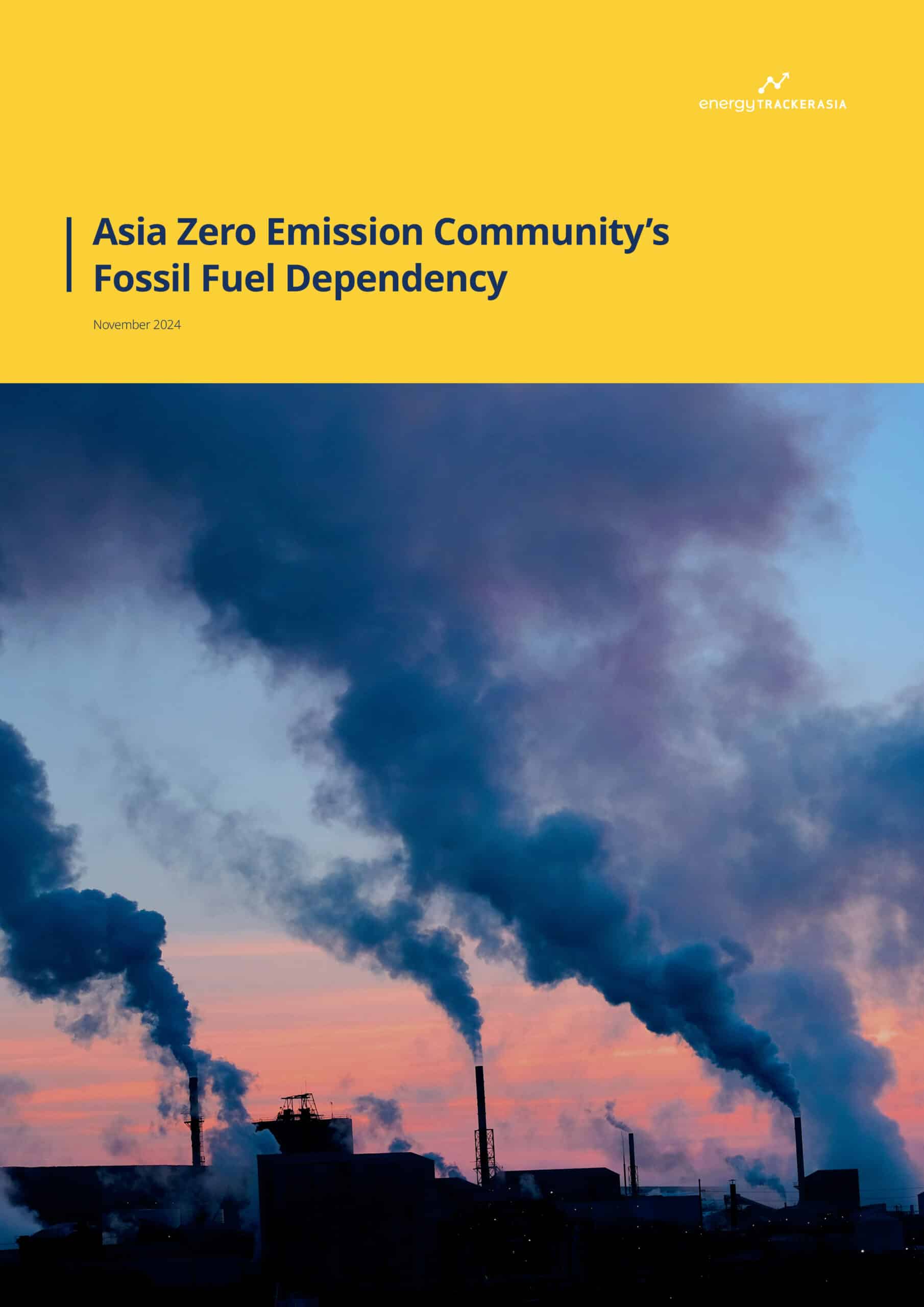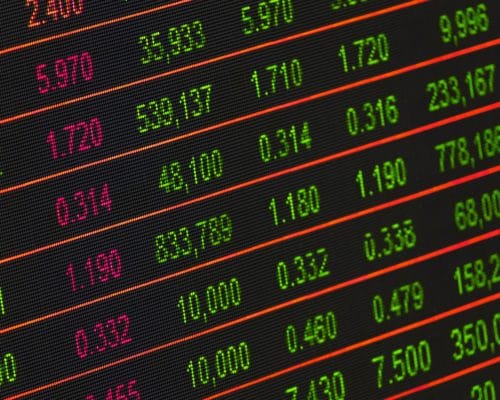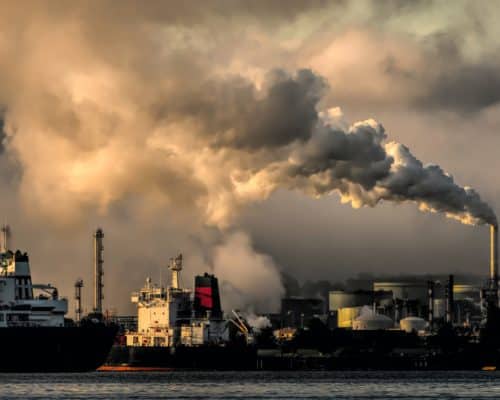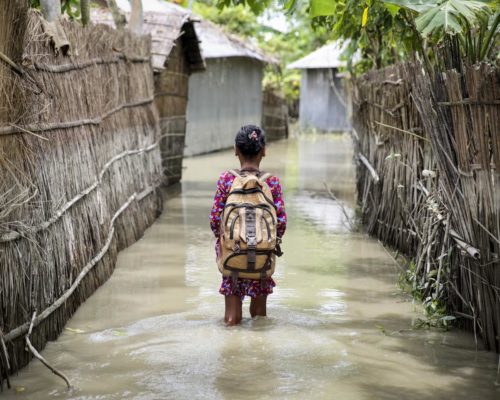What’s Behind Gas Expansion in Australia – New Report
04 August 2025 – by Viktor Tachev
A new report by the Jubilee Australia Research Centre, co-published with the Australian Conservation Foundation and the Fossil Free Japan Coalition, finds that corporate profits in Japan and South Korea are funding gas expansion in Australia. Aside from fueling emissions and further distancing the country from its decarbonisation goals, the researchers note that foreign liquefied natural gas project financing is costing Japanese and Korean taxpayers billions and also poses significant financial risks for investors. Furthermore, the plans threaten to slow down climate action, disrupt nature and affect the well-being of communities around development sites.
Researchers: Japanese and Korean Fossil Fuel Lobbies Drive Gas Expansion in Australia and LNG Demand Creation in Southeast Asia
The “How to Build a Gas Empire” report sheds light on the political and corporate interests in Japan and South Korea, and how they are profiting from the expansion of Australian gas. The authors find that Japan and Korea, collectively referred to as the “Gas Empire” in the report, have contributed USD 20.5 billion to Australian gas projects between 2008 and 2024. Over 64% of the financing came from Japan’s national export credit agency, JBIC. South Korea’s KEXIM and K-Sure are also significant funders.
The report finds that between 2023 and 2024, Japan invested a total of USD 2.9 billion in the Scarborough gas field, which directly contradicts Japan’s G7 commitment to end new direct public support for overseas fossil fuel projects by the end of 2022.
According to the researchers, the fossil fuel lobby in Japan and South Korea has exerted diplomatic pressure to hinder the energy policy debate in Australia. They note that the repeated interventions in Australian political discourse by the Japanese government and corporate representatives aimed to maintain a pro-fossil fuel agenda in the political dialogue and came in response to policy developments that support Australia’s climate and energy priorities. This strategy has also been evident in the design of energy policies in other Asian countries, in which Japan has either directly participated in or heavily influenced. One example is Indonesia, where gas is more costly than renewables.
“To Japan, Australian gas policy is like play-dough. Japan’s ability to change it has become so easy, it’s like child’s play,” explained Mia Watanabe, a campaigner from Fossil Free Japan. “It’s been moulded to serve the fossil fuel industry, not the climate nor our communities.”
Australian Government Encourages Gas Production
However, the gas expansion across Australia isn’t entirely forced externally by the Japanese and Korean fossil fuel lobbies. In fact, the report’s authors note that the government allows and encourages investments even though it has ended its public financing for fossil fuel projects through the Clean Energy Transition Partnership.
“When the Albanese government has signalled changes in Australia’s energy policies, fossil fuel interests from these countries have made brazen interventions to keep the tap running. The Gas Empire expects, given its investment in Australian fossil fuels, that Australia will guarantee the expansion of gas production. And the Albanese government is enabling this,” said James Sherley, a climate justice campaigner at Jubilee Australia and co-author of the report.
Southeast Asia as the Long-term Target Market For Natural Gas Demand
The report’s authors note that, while Japan and Korea have both historically relied on imports to meet their energy needs, including gas, with Australian LNG making up a significant share of total supply, both countries are seeing a decline in domestic demand and plan to capitalise on the decreasing costs of solar, wind and battery technology. According to them, while long-term LNG sales and purchase agreements (or LNG contracts) secure Australia’s exports to Japan and Korea, these contracts will expire in the first half of the 2030s, with no confirmed extensions. As a result, Southeast Asia shapes up as the key target market to justify the economics of the planned gas investments by the Gas Empire. Among the financed infrastructure are import terminals and power plants. According to the authors, the reason is that, once online, these assets would require more supply to extend their lifespans.
The report provides further evidence of Japan and South Korea’s efforts to “cultivate Asian demand” in Southeast Asian countries through measures such as energy policy interventions, selling excess gas to meet local oversupply and financing initiatives. For example, the Asia Zero Emission Community (AZEC) initiative, which the report’s authors refer to as a “greenwashing exercise” for the Gas Empire, and the risks of which Energy Tracker Asia has extensively reported on, intends to prolong fossil fuel use in target markets instead of putting full support into renewable energy. In the case of Australia, the country is involved in 12 proposed joint ventures under AZEC, but only three are focused on renewables. For reference, eight involve fossil fuel technologies.
Continued Gas Investment Poses Financial, Environmental and Energy Security Risks for Australia and Southeast Asia, Researchers Warn
According to the report, plans are already underway for several new and expanded gas projects in Australia and the Pacific, with potential financing from Japan and South Korea. If completed, these projects would drive a range of environmental, economic and social risks.
Undermining Energy Security
The report concludes that existing Australian gas projects significantly exceed the energy security needs of Japan, Korea and Australia, meaning there is no need for new infrastructure. The IEA predicts that global demand for gas will peak by 2030 in all three scenarios for future energy use, with signs of this already evident. According to Jubilee’s report, gas also has a small and decreasing role to play in Australia’s future energy mix.
The authors note that despite claiming that the continued investments in extraction, processing, transport and deployment of gas in Asian nations are for improving their energy security or as a step towards cleaner energy alternatives, the main goal of the fossil fuel proliferation by Japanese and Korean governments is to keep the gas industry operating and profiting for as long as possible. The experts warn that Japan’s claims that Australian gas is required for its domestic “energy security” have been disproven by findings that Japanese LNG customers are overcontracted and resell up to a third of their imported gas to other countries in Asia.
“The Australian government has repeated the line from politicians in Japan, that more Australian gas is required for Japan’s energy security. This is misleading, as Japan has more than what it needs for its domestic purposes, and is increasingly reselling its surplus gas,” said Sherley.
According to the report, while the Japanese government is hiding behind the guise of being a loyal consumer of Australian gas, claiming that it keeps the lights on in Tokyo, Japanese buyers are reselling a third of this gas at a profit.
“This isn’t about keeping Tokyo’s lights on, it’s about cementing corporate profits,” the expert adds.
Jubilee’s research echoes the findings of another report by IEEFA published last year, which warned of Japan’s efforts to dump excessive LNG on other markets by creating artificial demand. According to the researchers, the declining domestic gas demand in Japan has created a surplus problem for local utilities, which will attempt to stimulate demand and offload LNG to East and Southeast Asia as a hedge against financial losses from oversupply.
“It’s a toxic cycle, where artificial demand for gas justifies increasing supply,” Sherley said. “And despite claims that this is a temporary or ‘transition’ fuel, the evidence suggests the Gas Empire intends to grow indefinitely. This only serves to lock these developing countries out of renewable energy, which is already cheaper, cleaner and less susceptible to geopolitical tensions.”
Gas Investments Risk Distancing Australia From Its Decarbonisation Goals and Threaten the Environment and Well-being of Communities
In 2024, the first calendar year with a global mean temperature of more than 1.5°C above pre-industrial levels and almost a decade of record-breaking temperatures, Australia’s Minister for Resources Madeleine King said that the country plans to supply LNG “well into the future” to ensure energy security in the region. King also visited Japan and South Korea. According to Jubilee’s report, the goal of the visit was to meet key investors and provide assurances about certainty in Australia’s investment environment, as well as to evaluate the interest in the development of the country’s Future Gas Strategy. As a next move, the Australian government released the policy, signalling that it would continue to explore, extract and export gas. These came despite the IEA’s warning that there is no need for new gas fields or LNG facilities in the global pathway to net-zero emissions by 2050.
In the very same year, Australia ranked second in the global list of both the biggest coal and gas exporters. Its emissions per capita were higher than those of the US and almost three times more than those of the EU.
The report’s authors warn that the gas expansion in Australia and Papua New Guinea would drastically increase carbon emissions. If Australia’s LNG export facilities were to continue operating at full capacity or expand production as intended in the Future Gas Strategy, emissions would reach levels consistent with 2.4°C to 2.6°C of global warming. This scenario, labelled by scientists as an “irreversible climate disaster,” contradicts Australia’s obligations under the Paris Agreement and risks triggering cascading feedback loops that would render Pacific nations, such as Tuvalu and Kiribati, uninhabitable.
The report also warns that the LNG expansion plans risk unfolding “disastrous” economic, environmental and societal risks to communities across the region. Furthermore, they note that the gas buildout in Australia and the Asia-Pacific is slowing down the transition to renewable energy.
“Japan is using diplomatic force to lobby the Australian government into building new gas projects, locking in decades of polluting LNG infrastructure and shutting out the renewable energy transition. This isn’t energy security — it’s a gas empire built on short-term profits at the expense of long-term, irreparable damage to the planet,” warned Watanabe.
Australia is already falling behind other developed nations in terms of climate action. In 2025, it dropped two places in the Climate Change Performance Index, ranking 52nd globally. It received a medium rating in the GHG Emissions category, a low rating in Renewable Energy and Climate Policy and a very low rating in Energy Use. The country is yet to submit its 2035 NDC to the UNFCCC.
According to the authors, the Gas Empire already has a legacy of harm in Australia and around the world, as evidenced by stories across communities where people’s livelihoods, health and human rights have been impacted. One example is the JBIC-financed gas plant in the Verde Island Passage, Philippines. As previously reported by Energy Tracker Asia, the project is facing massive opposition from civil society and activists due to its impact on both the critical marine biodiversity hotspot and the livelihoods of local fisherfolk. The report reminds the Australian government of the risks that LNG poses to communities and ecosystems and warns that it can become complicit in perpetuating them.
Huge Economic and Financial Implications
Тhe report’s authors warn that the Gas Empire is costing communities and the climate in affected countries, adding that Australia was essentially “giving away a large portion of its gas for free”. For example, they note that the majority of Australian LNG facilities aren’t paying royalties, and none are paying Petroleum Resource Rent Tax (PRRT). A “very minimal” number of facilities are found to be actually paying company tax. In fact, the researchers note that Australian teachers pay twice as much tax as the entire oil and gas industry pays in company tax and PRRT.
Furthermore, the report finds that the gas industry essentially passes unnecessarily high energy costs on to consumers. This has been a common trend in many Asian countries relying on gas imports, such as the Philippines, for example.
Furthermore, new and expanding LNG infrastructure risks further worsening Australia’s already significant stranded asset risk, which was estimated at USD 18.6 billion in 2022. This means that the banks and financial institutions funding the projects risk having the infrastructure become obsolete before their loans mature.
This isn’t just a theoretical scenario, but a real-world problem as evidenced by the issues that Korean investors in Australia’s Barossa gas project are facing. As Energy Tracker Asia previously reported, environmental, economic and reputational concerns made prominent investors pull out of the project. These issues are likely looming over other LNG projects in Australia as well. For example, last year, the IEEFA questioned the commercial viability of Australian gas producers and their ability to compete successfully against lower-cost producing countries, such as Qatar.
The report’s authors also warn of a significant taxpayer burden for Japanese and Korean citizens, who unknowingly bankroll unnecessary foreign fossil expansion.
With COP31 Around the Corner, the Australian Government Has a Crucial Choice to Make
According to Dr. Suhailah Ali, the director of Climate Justice at Jubilee Australia and lead author of the report, the Australian government needs to take bold action towards a fossil fuel phaseout if it is to live up to its claims as a leader in climate action.
The report’s authors recommend that the Australian government commit to phasing out fossil fuel extraction, including the immediate cessation of approving new or expanded gas projects. The commitment should feature in the nation’s 2035 NDC, which the government has yet to submit, as well as make the headlines of COP31. Another helpful measure on that front is ensuring that the Australian government’s Commonwealth Gas Market Review prohibits gas companies from entering into future LNG contracts that would require the development of new or expanded gas projects.
The report also includes a recommendation from the Climate Change Authority’s 2024 Sector Pathways Review, calling for proactive diplomacy to negotiate bilateral decarbonisation agreements with Japan and Korea. These agreements should reaffirm Australia’s position as a trusted trading partner while also supporting the phaseout of fossil fuel exports and the transition to renewable energy.
The authors advise proactive work with Japan and Korea to honour their international commitments and shift public finance out of fossil fuels and into renewable energy, including the Paris Agreement, the COP28 Agreement to transition away from fossil fuels, and Japan’s G7 pledge to end direct public support for overseas fossil fuel projects. Meanwhile, they urge Australia to take an active role in advocating for Japan and South Korea to join the Clean Energy Transition Partnership. The experts also recommend that the Australian government hold AZEC accountable and ensure that it champions renewable energy, rather than false solutions intended to prolong the life of fossil fuels.
Last but not least, the Australian government can boost its climate action credentials by excluding fossil fuel lobbyists from state delegations and prohibiting fossil fuel corporate sponsorships at COP31, the report’s authors note.
“Behind the scenes, the Australian government is lobbying hard to host COP31 — the United Nations’ annual climate forum — in 2026,” said Dr. Ali. “If the government wants to stand side by side with the Pacific with integrity and accountability, then it must have a plan for a fossil fuel phaseout. That starts with no new coal and gas projects.”
by Viktor Tachev
Viktor has years of experience in financial markets and energy finance, working as a marketing consultant and content creator for leading institutions, NGOs, and tech startups. He is a regular contributor to knowledge hubs and magazines, tackling the latest trends in sustainability and green energy.
Read more